Graphics Design
15.The Importance of Effective Flyer Design in Marketing
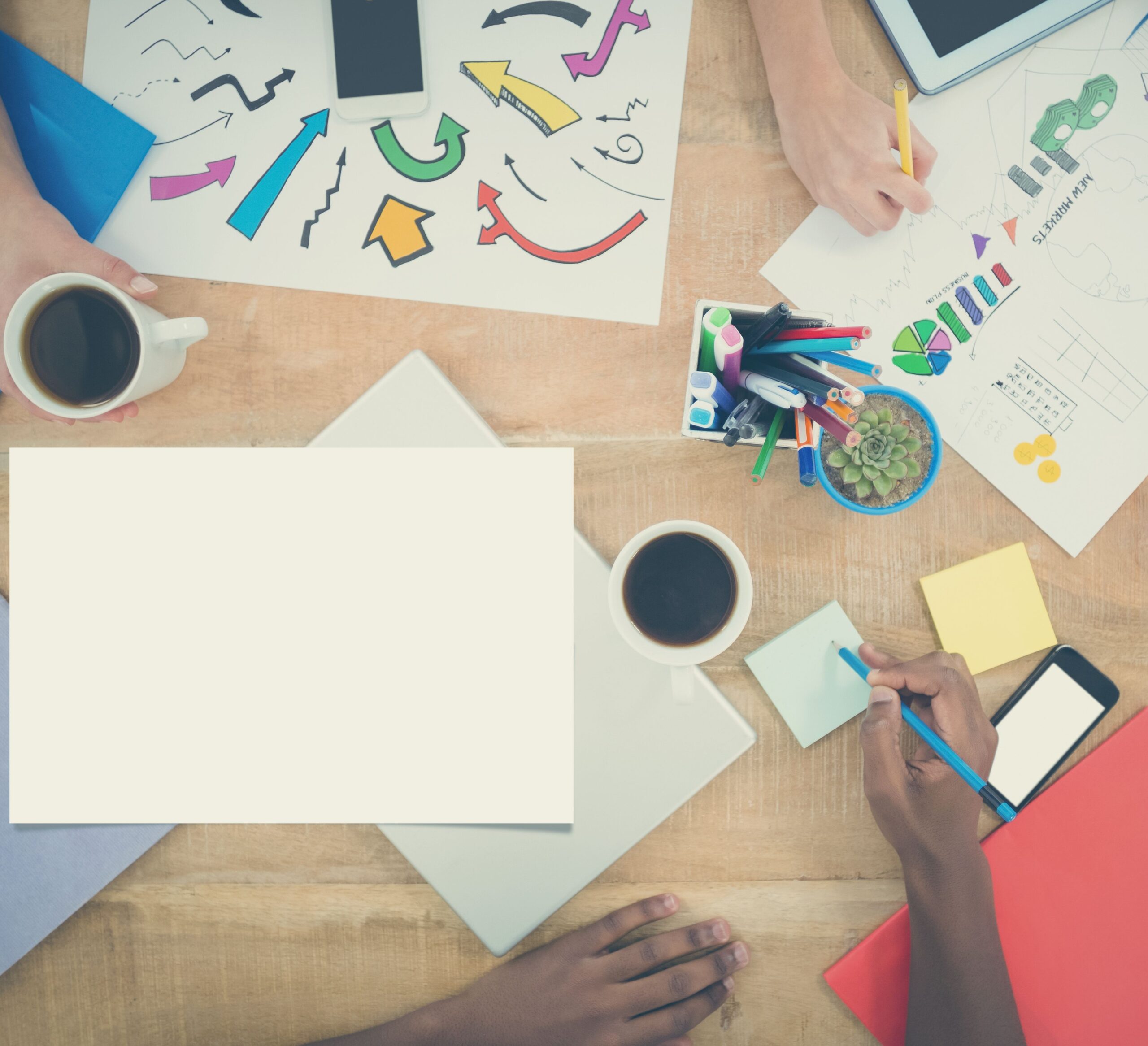
The Importance of Effective Flyer Design in Marketing
Here’s an overview:
-
Introduction to flyer designing.
• Shedding Light on the Use of Flyers in Marketing.
• The Important Issues of a Flyer Design
• Design Tips for Designing Compelling and Eyecatching Flyers
• The Importance of Hierarchy in Flyer Design
• The determination of the success of your flyer marketing campaign.
Introduction to Flyer Design.

I think the importance of effective flyer design in marketing that a proper flyer design is a vital piece of the marketing campaign make up. While designing a flyer, I concentrate not only on the composition of the design itself but also on its attractiveness in terms of colors and informational clarity. To stand by them I pay attention to such elements like color, font, images, and general layout of my artwork.
undefined-the importance of effective flyer design in marketing
• Purpose: The importance of effective flyer design in marketing while doing the designing, I would be the first to finalize the flyer’s primary purpose. For instance, does it aim at promoting an event, offering a discount or increasing brand awareness? However, having the goal in mind assists in creating a purposefully artistic work.
• Target Audience: Audiences understanding is key to focus on the details that resonate with them and meet them at their point of relevance. I take into account that the age range, gender, and interests may vary. Therefore, I design the flyer’s colors, images, and the language accordingly.
• Call to Action: The importance of effective flyer design in marketing i make sure the flier has an action that easily shows the course of action the receivers need to take. Whether you are visiting the website, contacting the business or making a purchase, the call to action notification should be firmly on the display.
• Brand Consistency: I ensure my flyer adheres to the brand style guide and this helps brand identity and also unifies its marketing message. In this regard, brand colors, fonts, and logos are some of the aspects used in the design.
• Readability: The importance of effective flyer design in marketing My focus is on readability, this means that I will utilize easy to read fonts, white space to create visual clarity and organizing information in a proper succession. Eye catching headline, bullet points, and short paragraphs will bring more clarity among the readers.
Finally, The importance of effective flyer design in marketing brochure that was designed properly could succeed to attain the audience, pass the information, and encourage action. A flyer can be made with design elements and can be targeted to an audience as a strong marketing tool.
Shedding Light on the Use of Flyers in Marketing.
The importance of effective flyer design in marketing, I have experienced on my own how flyers make a big impact on marketing actions. When I disseminate flyers, I see that they are a great way to build the brand awareness because they reach to many people. Through my experience, flyers become a concrete evidence of existing reputation of a brand or company that makes the customers more likely to remember the product or service offered.
• High Visibility: The importance of effective flyer design in marketing effective in getting the attention of potential customers when they appear more inspiring. The use of bright colors, catchy headings, and vivid images can make the flyer attract the attention of your target audience in the sea of advertisements.
• Cost-Effective: An advantage of the importance of effective flyer design in marketing campaigns is the low cost involved. As printed flyers are very cheap in production, they are the most economical form of printed advertising in comparison to radio or TV commercials.
• Targeted Marketing: The importance of effective flyer design in marketing flyers help position companies for customized marketing campaigns. Distribution of flyers in locations or venues where the audience is expected to be present would mean that I can reach those people who are most likely interested in the product or service.
• Action-Orientation: The importance of effective flyer design in marketing can mention a specific action call, encouraging future customers to visit a site, phone number or physical store. It is with this straight-to-the-point approach that instant and conversions are realised.
• Flexibility: The importance of effective flyer design in marketing flexibility that flyers offer, in terms of design and distribution, is one of the benefits of using them. It matters if it is just a simple sheet of black and white flyers handed out on the street or a glossy brochure that appears in newspapers, the flyer can be made to meet different marketing objectives.
The importance of effective flyer design in marketing, you need to comprehend the place of flyers in marketing to create an effectual marketing campaign. Using the positive qualities flyers bring the companies can boost their brand awareness, build a specific audience, and attract more customers.
The Important Issues of a Flyer Design.
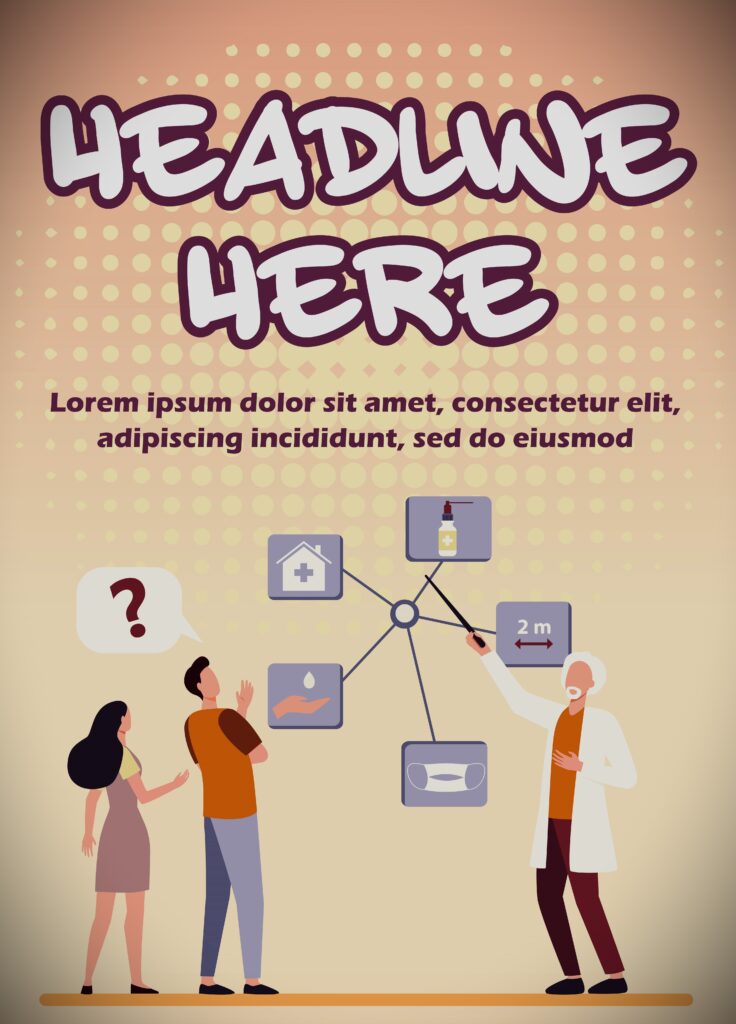
- Eye-Catching Headline: The importance of effective flyer design in marketing headline is the most important element that drives the reader to read the article. It should be clear and to the point, and even from a far distance, people will be able to understand it.
• Clear Message: The importance of effective flyer design in marketing ensure that your flyer gets across the message in a concise and clear way. Do not litter the layout with too much of the text; instead, focus on some of the content that will be relevant to people whom you are targeting.
• High-Quality Images: The importance of effective flyer design in marketing consider using high-resolution pictures which depict the message you want to convey. Visual elements play a very important part in the successful launch of your leaflet as well as hook the reader.
• Consistent Branding: The importance of effective flyer design in marketing make sure you flyer design mimics your brand identity. Make sure the colors, fonts, and logos are consistent throughout the brand to build brand recognition.
• Call to Action: At the end, create a clear call to action that informs the reader of the next steps. No matter if they are on your website, phone or at your store location, showcase how your offerings will benefit them.
• White Space: However, do not clutter your flyer with too many details. White space is an element that can help to make the reader’s eyes wander that the flyer is easy to read.
• Contact Information: Make sure to include all the necessary contact information, for example your site, website, phone number, and social media channels. This facilitates the process of a customer who is interested enough to reach out.
• Print Quality: Invest in quality printing that will make your flyer look shiny and nice to the eye. A well printed flyer is likely to linger in the part of reader’s memory.
Interweaving these critical design aspects in your flyer can result in an aesthetically engaging and effective marketing tool that will make sure your audience receives the message and you achieve your marketing goals.
Design Tips for Designing Compelling and Eyecatching Flyers.
- Use of compelling visual images like high quality images or graphics will help to captivate the viewers’ attention right in the beginning.
• Keep in mind simplicity and clarity when creating the design as you aim to reveal a clear message, not lost in a maze of information.
• Contrast colors so the eye is drawn to the key messages and that visual hierarchy is created in a flyer.
• Coming up with an accurate and concise title that sums up the main purpose of a flyer will be a must.
• Make sure you choose a font size and font style that is clearly legible even if the person is far away.
• Include a banner with the company’s brand elements (logo, colors, fonts) to ensure brand consistency.
• Design the flyer while balancing white space to give it an eye-pleasing looks.
• Think about how to design the flyer in such a way so that the reader starts by seeing the most important information and then gradually reads it on downwards.
• Include a call to action that aims to get the audience to a particular following action including visiting a website or contacting the business.
• Make sure that the flyer is prone to no typical errors like typos by doing the proofreading well to avoid them from spoiling the flyer design.
Having these design ideas in mind, I will be able to design the advert making it powerful, convincing and eliciting the right reaction from potential audience.
The Importance of Hierarchy in Flyer Design.
The importance of effective flyer design in marketing i think it really stands out for me that the common element between the flyer design and building the brand recognition and credibility is the consistency. Maintaining a consistent design while crafting a flyer for branding campaign purposes helps display a uniform vision for the brand. This consistency effect is achieved by utilizing the same color scheme, fonts, and overall pattern in all your marketing channels.
1. Brand Recognition: The importance of effective flyer design in marketing continues brand consistency of the flyer design will allow customers to easily recognize it as yours. Likewise you achieve this through always using the same logo, colors, and design elements that immediately associate your brand image with your customers. When you use flyers that look like the rest of your marketing message, then people are more likely to relate your brand with flyers.
2. Professionalism: The importance of effective flyer design in marketing regularity of designs in flyers reflects that you care about brand perception and pay close attention to details. It will be understood as proof of your business’s professionally and trustworthiness. Disagreeable designs may deliver the message of unfinished or attentional absence to the customers and eventually repel the prospective customers.
3. Credibility: Consistent design throughout all your flyers essentially gives a solid impression. Having a consistent branding will make customers more confident about your business because it means that your business is stable and credible. The need to have a consistent design cannot be overlooked; this will help you to create a sense of trust with your audience and in the process raise their engagement level and conversions.
Briefly speaking, the consistency in flyer design has a key role to play in boosting the recognition and trustworthiness of your brand by your target audience; which will improve your chances of a successful business. Thanks to this, all your flyers would have uniform design guidelines and build an identity of the brand and that of the customers who see these flyers. In the end, they would leave a lasting mark.
The determination of the success of your flyer marketing campaign.
- Response Rate: One key measurement is the response rate. I observe how many people call me or look at my site following the distribution of the flyer.
• Conversion Rate: To do the conversion calculation I have to work out whether those that reacted to the flyer actually bought the item or made the desired action. By using this metric, one can measure the sale or the number of leads generated through your flyer.
• Brand Awareness: Monitoring brand awareness is like having a finger on the pulse. What I check to see is how many people mention the flyer or demonstrate an understanding of the brand that I am promoting after they see the marketing material.
• ROI: On determining return of investment (ROI) for flyer campaign is important; I evaluate the expenses and revenue opportunities of creating and distributing the flyers against actual revenue collected at the end of the campaign.
• Engagement: Tracking engagement metrics such as social media shares, likes, or comment relating to the campaign, I can measure how much the audience enjoyed and became affected by it.
• Customer Feedback: Feedback from people who received the flyer can provide me with key figures on how effective the design and message were thus I can refer to that information for the next marketing campaigns.
Evaluation of these numbers enables me identify the effectiveness of my runway marketing campaign and helps me in figuring out the strategies to best utilise marketing resources in future.
Graphics Design
Top 5 Free AI Shirt Design Tools You Need to Try in 2025
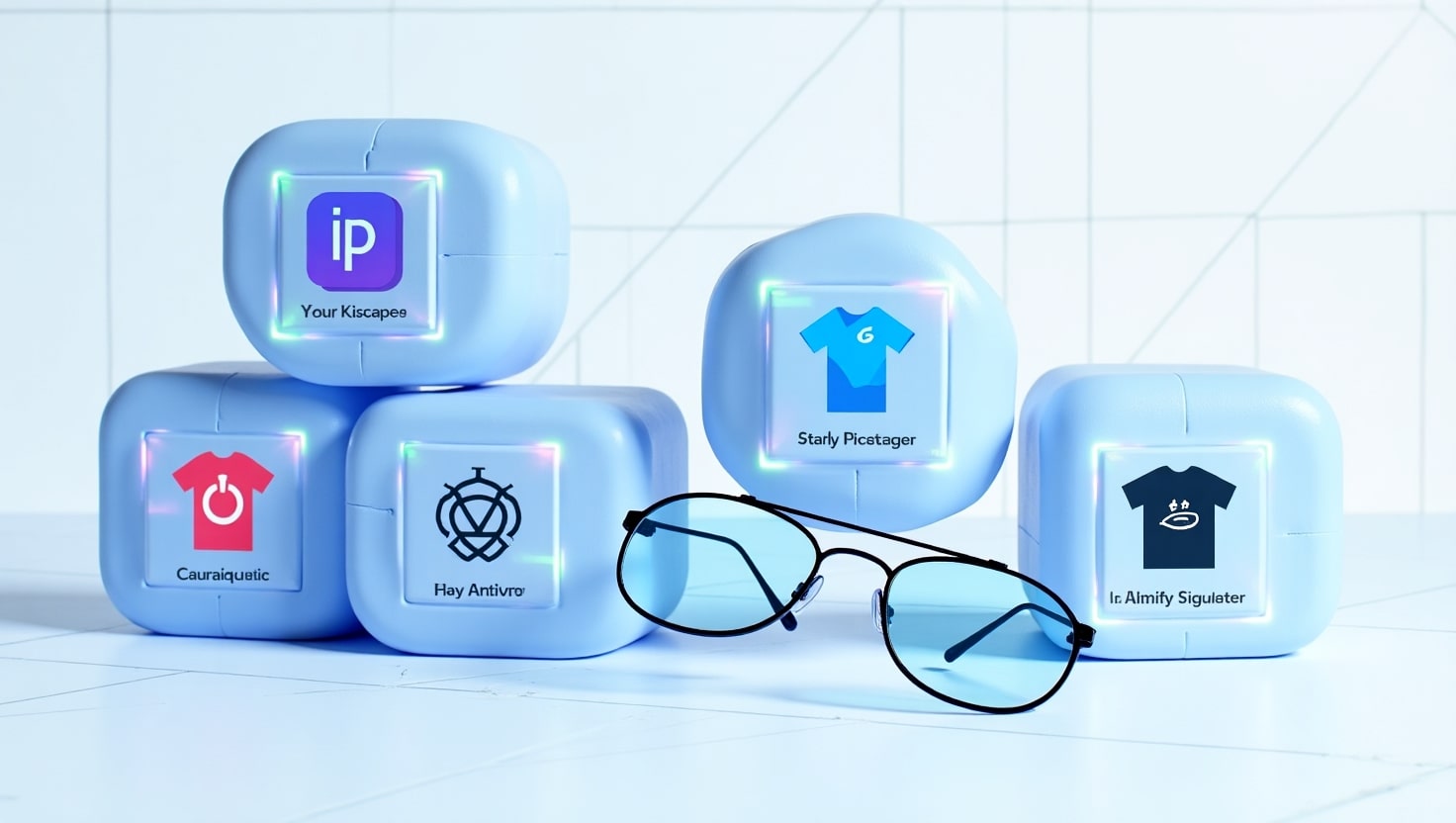
Top 5 Free AI Shirt Design Tools You Need to Try in 2025
The rapid development in fashion shows us that AI tools now transform how designers make innovative and fashionable garments. Free AI Shirt Design tools from 2025 help various users ranging from experts to casual enthusiasts to create amazing t-shirt designs rapidly. Visitors can discover the five leading free AI Shirt Design tools included in this article which provides the latest 2025 software solutions.
These powerful features in the tools simplify t-shirt design creation beginning from creating artistic work to streamlining your output. Zealous designers together with business owners and anyone appreciating custom apparel execution should read further to select their optimal free AI Shirt Design software solution.
1. Canva AI Shirt Design
Why Choose Canva for AI Shirt Design?
Users can now use AI capabilities from Canva to design excellent Shirt Designs through its online design platform. Canva provides users with easy access to pre-made templates together with basic tools to build custom t-shirts.
The Main Features of Canva AI Shirt Design Include

- AI-generated design suggestions
- Drag-and-drop interface for easy customization
- Free templates for various t-shirt styles
- High-quality export options for printing
- Collaboration features for teams
How to Use Canva for AI Shirt Design?
- Users can establish a Canva account by registering for Free service.
- Video tutorials about AI Shirt Design templates can be found in the design library.
- Users can personalize their t-shirts through the selection of fonts and colors along with graphics.
- Print the design using any preferred material after downloading it from the platform.
The AI tools in Canva enable users to create t-shirts with a professional appearance without effort.
2. Deep Dream Generator
Why Choose Deep Dream Generator for AI Shirt Design?
People with a preference for abstract and artistic designs will find Deep Dream Generator to be an excellent Shirt Design platform. The tool applies neural networks to develop surreal and eye-grabbing t-shirt designs.
Deep Dream Generator AI Shirt Design includes three essential features for users.

- AI-powered artistic transformations
- AI Shirt Design offers users multiple art styles which enable them to create unique designs.
- Easy upload and processing of images
- Users can access the product without paying any usage fees only when they consume limited credits.
- Great for psychedelic and dreamlike t-shirt prints
How to Use Deep Dream Generator for AI Shirt Design?
- Users can input their image and select from an available gallery of images.
- You must apply one of the AI filters to create artistic transformations of images.
- Users should adjust the effect parameters to achieve maximum results.
- User can acquire the final AI Shirt Design for printing directly on a t-shirt.
Deep Dream Generator provides the ideal solution for users who seek artistic and aesthetically pleasing shirt designs.
3. Kittl AI Shirt Design Tool
Why Choose Kittl for AI Shirt Design?
Kittl is an excellent alternative to traditional design software, offering powerful AI-driven features specifically for Shirt Design. It provides vector graphics, typography effects, and AI-powered automation for seamless designing.
Key Features of Kittl AI Shirt Design Tool

- AI-assisted design creation
- Huge library of fonts, illustrations, and elements
- Non-destructive editing features
- Supports high-resolution exports for printing
- Free and premium versions available
How to Use Kittl for AI Shirt Design?
- Visit Kittl’s website and create a free account.
- Select the “AI Shirt Design” category to explore templates.
- Customize the design with text, graphics, and colors.
- Export the design in high resolution for t-shirt printing.
Kittl is a fantastic choice for both beginners and professionals looking for AI-powered creativity.
4. Designify AI Shirt Design
Why Choose Designify for AI Shirt Design?
Designify provides background removal services and image enhancement features which align well with projects about Shirt Design. Shirt Design users who want to develop neat and business-ready t-shirts can find an excellent solution in this tool.
The AI Shirt Design edition of Designify provides users with these essential features.

- AI-based background remover
- Smart color correction and enhancements
- Users can access this application free of charge while receiving basic service features.
- Ideal for e-commerce t-shirt sellers
- Easy export options for print-ready designs
How to Use Designify for AI Shirt Design?
- Upload your t-shirt design image.
- AI technology can eliminate backgrounds while you also modify color tones.
- The application lets users improve details to achieve a more precise appearance.
- The tool is available for free t-shirt printing projects through a direct download.
Users seeking fast professional t-shirt designs should utilize Designify because it automates their design work.
5. Deep Art Effects AI Shirt Design
Why Choose Deep Art Effects for AI Shirt Design?
Through its AI capabilities Deep Art Effects converts pictures or images into art masterpieces. The tool functions particularly well to develop original artistic prints for AI Shirt Designs.
The Deep Art Effects AI Shirt Design system offers various important functional elements for users.

- AI-powered artistic filters
- High-resolution output
- Multiple style options, from classic to modern
- Free version available with limited features
- Great for custom and trendy t-shirt designs
How to Use Deep Art Effects for AI Shirt Design?
- Users need to add an image to the platform’s system.
- Users can select various AI art styles through the platform.
- Users can improve their design by modifying the program settings.
- Users can obtain and print the t-shirt design from the platform.
The application serves as a top option to transform unexceptional images into eye-catching t-shirt designs.
FAQs About AI Shirt Design
- What is AI Shirt Design?
The process of producing t-shirt designs through the combination of artificial intelligence tools is known as AI Shirt Design. Users experience simplification in the design process because automated tools allow them to generate exceptional artwork.
- Shirt Design tools provide users with the option of using their services without any financial cost.
Yes! Shirt Design tools give users access to free basic functionalities through their cost-free editions. You can make superb designs without paying for AI Shirt Design tools even though the premium options provide more extensive functionalities.
- What should novice users look for in an Shirt Design software?
The combination of Canva and Kittl delivers effective tools for beginner users due to their AI templates alongside user-friendly design interfaces.
- Can professional users operated Shirt Design applications for business purposes?
The capability to use AI Drink Design tools depends on the individual tool you select for work. A number of AI-generated designs need users to obtain a commercial license before use. Review the contractual terms and conditions for your t-shirt sales specifically before distributing design merchandise.
- What functions drive Shirt Design tools to operate?
Artificial intelligence algorithms inside these tools create or boost design solutions after receiving user input. These tools examine existing patterns and utilize AI tools to enhance designs which results in attractive t-shirts.
- Shirt Design tools have the capability to replace human designers in certain situations or functions.
The strong capabilities of AI remain insufficient to substitute total human creativity. These tools serve as helpful resources which improve speed and efficiency during the design process.
Conclusion
The development of Shirt Design tools in 2025 has reached such high levels of advancement that any person can instantly make beautiful t-shirt designs without effort. Each artist can find their perfect AI design tool among the options including Canva for easy use and Deep Dream Generator for artistry and Designify for automatic enhancements.
All users including print-on-demand operators and fashion fans and individual small business owners have unlimited design freedom through free AI shirt platform tools. Test these tools now because they help you bring artistic t-shirts alive.
Your fashion leadership will benefit from AI technology to develop exceptional t-shirt designs along with professional standards through a process that requires no technical expertise at all. Happy designing!
Graphics Design
Top 10 Stunning Tools for NFTs Designing Like a Pro

Top 10 Stunning Tools for NFTs Designing Like a Pro
Global interest in NFTs designing has risen dramatically while drawing digital artists alongside creators and established brands to participate in blockchain-based art sector. Rising engagement around NFTs alters digital asset perspective while new tools for design creation and blockchain management become essential for makers in this exploding field. Every designer who uses their best available tools can reach groundbreaking NFTs creation levels both at professional and beginning skill levels.
This article highlights ten advanced tools that enable creators to achieve their NFT creation objectives. These tools will transform your digital art design process by enabling animated NFT releasing directly onto blockchain networks.
What Makes NFTs Designing Unique?
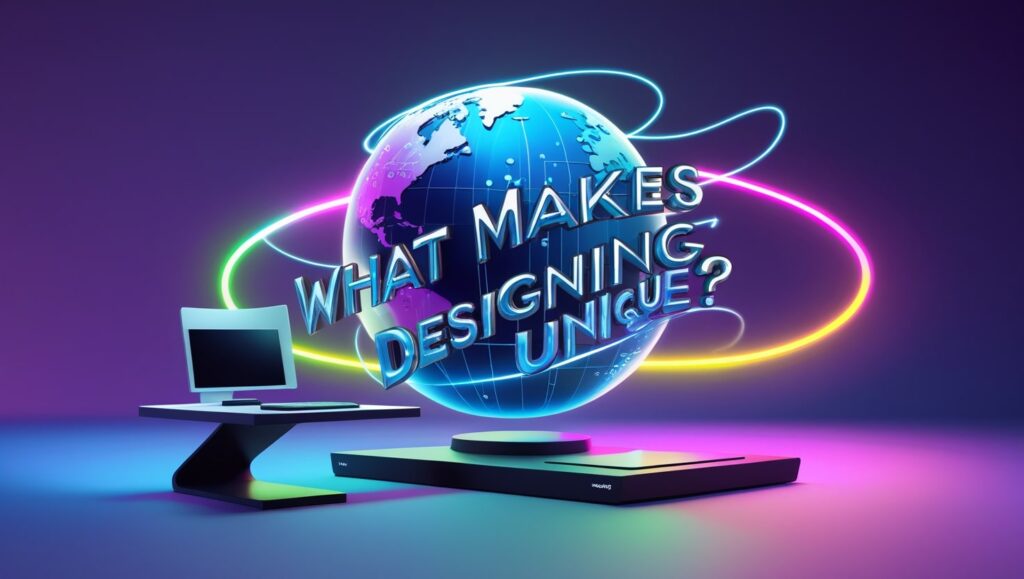
Non-fungible tokens (NFTs) function as distinctive digital assets which support ownership rights for art and music recordings or proprietary collectibles in addition to actual property. The characteristics of physical design separate NFTs from conventional artworks which enables creators to maintain ownership rights as buyers obtain standalone digital assets. NFTs designing demands creativity and programming skills which create blockchain integrations for your work while sustaining exclusive and tamper-proof uniqueness.
Being useful in this evolving field requires tools which bring together creative elements with functional features. The tools assist designers with concept development along with artwork optimization and produce blockchain-prepared assets so their designs rise above competition in the NFT market.
Key Features to Look for in NFTs Designing Tools
Before diving into the top tools, it’s essential to know what features to prioritize:
- User-Friendly Interfaces: Platform solutions need to accommodate novice users and experts on their design spectrum.
- Blockchain Integration: Seamless minting of NFTs directly from the design platform.
- High-Quality Output: Premium-quality renderings in your design work increase the likelihood of attracting buyers.
- Diverse Functionality: Tools which enable animation development alongside 3D artwork generation and multiple creative features are supported.
The following section reveals ten essential tools that fulfill these specifications to elevate your NFT design capability.
Photoshop: A Designer’s Staple

Photshop stands alone as the main tool for NFT designing. Digital artists have been relying on Photoshop for many decades because of its strong features which enable intricate design work and detailed image editing and spectacular visual effects for vibrant artwork.
Why Photoshop for NFTs Designing?
- Advanced Tools: Through its brushes and 3D tools Photoshop provides users boundless artistic freedom.
- Compatibility: The platform enables multiple file formats which work well for NFT marketplace operations.
- Animation Features: Design dynamic NFTs with GIFs and animations in your digital projects.
While its learning process takes effort it remains essential for professional designers because of its unparalleled power.
Illustrator: Vector Art at Its Best
Any creator making clean scalable NFT artwork counts Adobe Illustrator as their leading platform for design work. Vector art experts appreciate this tool because it lets designers manufacture exact and detailed visuals that remain flawless even when artwork experiences changes in size.Creating shapes and patterns and drawn illustrations demands high precision through this tool.Such platforms feature infinite scalability because they work exceptionally well for NFT collectibles. designing, no tool is as iconic as Photoshop. Trusted by digital artists for decades, Photoshop offers robust capabilities to create intricate designs, edit images, and add effects that make your art pop.
Standout Features for NFTs Designing:
- Precision in creating shapes, patterns, and illustrations.
- Infinite scalability, perfect for NFT collectibles.
- Seamless integration with Photoshop for combined workflows.
Blender: Dive into 3D NFTs Designing
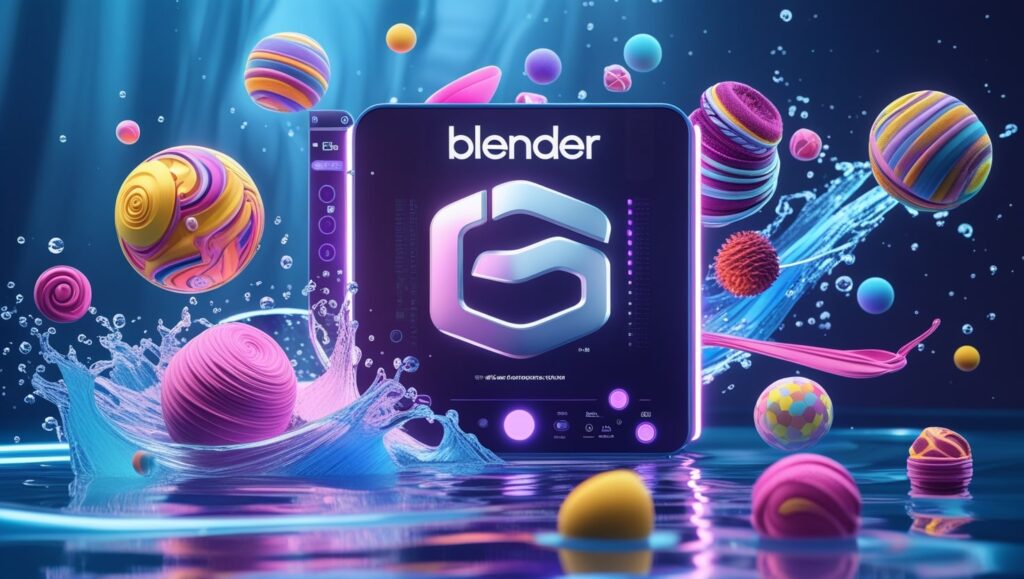
Rock-solid 3D art creation abilities within Blender transform the NFTs design space into its essential component. You can achieve unmatched creative possibilities together with flexible design features in Blender when you work with animated 3D avatars and intricate models.You can utilize the platform for free since it operates through a source code model.NFT creators can access sophisticated animation features through the tool.designing, no tool is as iconic as Photoshop. Trusted by digital artists for decades, Photoshop offers robust capabilities to create intricate designs, edit images, and add effects that make your art pop.
What Makes Blender Exceptional?
- It’s completely free and open-source.
- Advanced animation tools for creating engaging NFTs.
- A thriving community with endless tutorials and add-ons.
With Blender artists can create outstanding NFT assets through their ability to perform sculpting and rendering operations.
Canva: Simplicity Meets Creativity
The NFTs designing process for beginners starts with excellent results using Canva. Users can take advantage of Canva’s conveniently simple interface through drag and drop to produce visually impressive outputs while avoiding technical limitations.
Why Canva for NFTs Designing?
- Thousands of templates to jumpstart creativity.
- Easy integration with stock images and icons.
- Your NFT collections can use Canva to create ideal marketing materials.
By lacking blockchain integration Canva serves well for designing promotional assets and creating basic NFTs.
Procreate: Ideal for Digital Illustrations

The iPad exclusive Procreate has taken its position as the primary tool of choice for digital illustrators entering NFT design spaces while focusing on iPad users. The tool has both an easy-to-use interface and genuine drawing efficiency which makes it suitable especially for art sketching and refinement work.Animation Assist enables users to create dynamic NFTs.nners venturing into NFTs designing, Canva is a fantastic starting point. Known for its drag-and-drop simplicity, Canva provides an accessible way to create eye-catching designs without needing advanced technical skills.
Procreate Features for NFTs Designing:
- Customizable brushes for unique styles.
- Animation Assist for creating dynamic NFTs.
- High-resolution canvas support for premium designs.
The digital platform appeals to artists because it provides realistic digital drawing solutions which emulate artwork from traditional media.
Figma: Collaborative NFTs Designing Made Easy
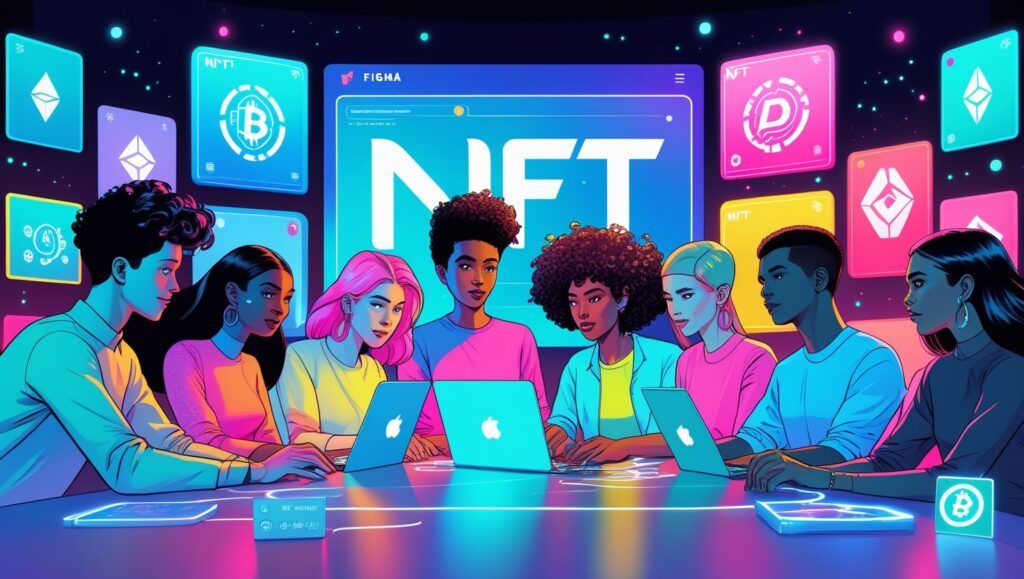
The collaborative features of Figma operate through its cloud infrastructure which leads to efficient team design workflows. The platform primarily serves UI/UX design but offers enough flexibility to work as a productive tool for NFTs designs primarily with collaborative teams.Users benefit from smooth creative workflows because Canva can connect to various additional creative tools.FTs designing, Canva is a fantastic starting point. Known for its drag-and-drop simplicity, Canva provides an accessible way to create eye-catching designs without needing advanced technical skills.
Figma’s Best Features for NFTs:
- Real-time collaboration for team projects.
- Scalability for vector-based designs.
- Integration with other creative tools for a streamlined workflow.
SketchAR: NFTs Designing with AI Assistance

Through its AI-driven features SketchAR turns your traditional drawings into elegant digital art designs suitable for NFT creation. Art creators who desire technical assistance with artistic production will find SketchAR to be their ideal mobile companion because it utilizes AI-based artistic functions.Users can produce augmented reality NFTs through the tool toolkit.tchAR bridges the gap between traditional art and NFTs designing by using AI to transform your sketches into stunning digital art. With its focus on AI-powered art creation, this app is perfect for creators who want a blend of technology and artistry.
Key Highlights of SketchAR:
- AI-based transformations of hand-drawn art.
- Tools for creating augmented reality (AR) NFTs.
- A beginner-friendly interface for quick learning.
ArtBreeder: A Tool for Generative NFTs
Generative art design trends in NFTs are led by ArtBreeder which is a powerful tool for creating generative pieces. AI transforms creator input by letting users modify elements including color and texture and style for creating unique pieces.The programm enables you to generate limitless variations of your design creations.Artists should use genetics-based design to create their unique artworks.R bridges the gap between traditional art and NFTs designing by using AI to transform your sketches into stunning digital art. With its focus on AI-powered art creation, this app is perfect for creators who want a blend of technology and artistry.
Why Use ArtBreeder for NFTs Designing?
- Create endless variations of your designs.
- Focus on genetics-based design to build unique art.
- Ideal for large NFT collections like profile picture series.
Rarible: Mint and Design in One Place
The NFT marketplace Rarible gives creators native capabilities to design and mint their artworks directly through the platform while maintaining marketplace connectivity. New NFT designers find the complete solution feature set attractive in choosing Rarible to create their digital collectibles.A basic interface lets users generate and mint NFTs.The tool provides support for numerous blockchain networks which enables flexible operation.ridges the gap between traditional art and NFTs designing by using AI to transform your sketches into stunning digital art. With its focus on AI-powered art creation, this app is perfect for creators who want a blend of technology and artistry.
Rarible’s Design Features:
- Simple interface for creating and minting NFTs.
- Community-driven platform for collaboration and exposure.
- Supports multiple blockchain networks for flexibility.
ArtBreeder: A Tool for Generative NFTs
Generative art has become a major trend in NFTs designing, and ArtBreeder is one of the best tools for this purpose. Using AI, it allows creators to generate unique pieces by tweaking variables such as color, texture, and style.
Why Use ArtBreeder for NFTs Designing?
- Create endless variations of your designs.
- Focus on genetics-based design to build unique art.
- Ideal for large NFT collections like profile picture series.
Affinity Designer: A Cost-Effective Alternative
Affinity Designer provides creators with professional-grade capabilities at an affordable one-time purchase price for designing NFTs. Affinity Designer becomes a cost-effective solution because it requires only a single payment for access to its professional design features.Indie creators benefit from its single payment method which provides budget support.reators who need powerful tools without subscription fees, Affinity Designer offers a compelling alternative for NFTs designing. With its one-time payment model, it’s budget-friendly while still delivering professional-grade features.
Why Choose Affinity Designer for NFTs?
- Excellent vector and raster design capabilities.
- Advanced grid systems for precise designs.
- One-time cost makes it accessible for indie creators.
FAQs
What is NFTs designing?
Digital artwork creation along with blockchain-ready tokenization of assets constitutes the process known as NFTs designing. Artistic creation meets blockchain compatibility requirements to make designs workable for blockchain platforms.
Building NFTs requires specialized creative assets yet tools for the process are not necessarily expensive.
Not necessarily. Free alternatives such as Blender and SketchAR offer traders and creators complete access to robust NFTs designing capabilities alongside premium tools like Photoshop and Illustrator.
The ability to produce NFTs works for individuals who lack coding ability.
Yes! Two popular platforms called Canva and Rarible have designed their interfaces so creators without programming expertise can easily create and mint NFTs.
What tool would be most suitable for novice NFT creators?
For beginner-level NFTs designing Procreate and Canva emerge as exceptional tools because they present easy-to-use interfaces together with general design capabilities.
What are generative NFTs?
Mounting artworks via generative NFTs includes algorithm-based production methods that generate distinctive variations of digital pieces. With its capabilities ArtBreeder operates specifically in the area of generating different types of NFTs.
Can mobile applications help users with the creation of NFTs?
Users can utilize Procreate through their iPads together with SketchAR to develop NFTs from any location.
Conclusion
The expansion of Non-Fungible Token design remains wide open but selecting appropriate tools shapes the ultimate outcome. All skill levels find appropriate tools between advanced tools like Photoshop and Blender and straight-forward tools like Canva and Rarible. NFT art creation through platform experimentation will help users develop original artwork which packs a memorable impact.
The digital art world continues to transform along with new possibilities that emerge for creators. Begin your NFT design evolution today by selecting any tool that suits you from the options available.
Graphics Design
Top 5 Exciting Social Media Post Design Ideas to Follow This Year
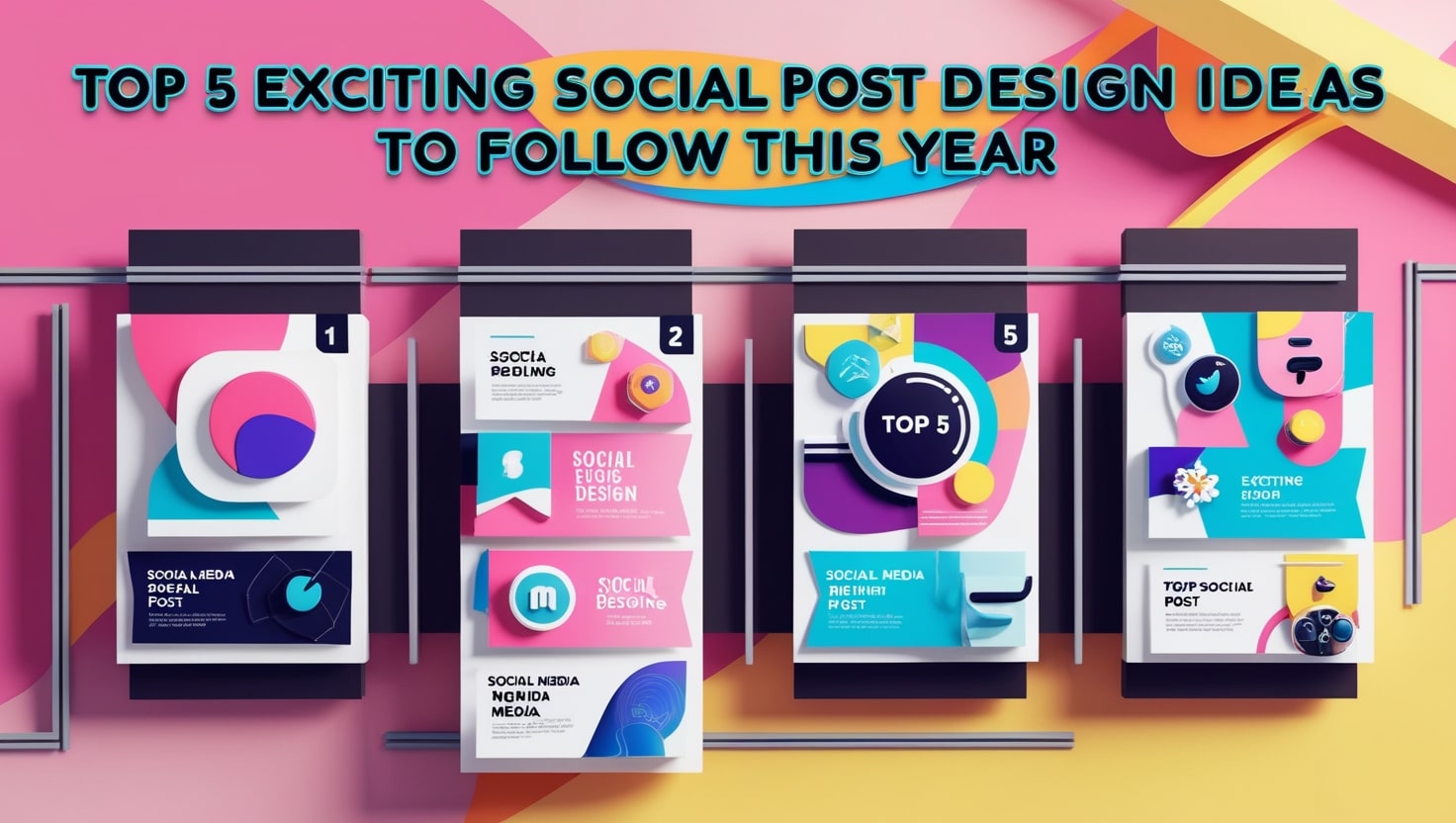
Top 5 Exciting Social Media Post Design Ideas to Follow This Year
Sites formerly used mostly for social media post design ideas purposes have evolved into interactive brainstorming arenas and narratives. It has become imperative that one cannot afford to lag behind in this type of a market environment; opting for creative approaches to social media post design being unavoidable. Regardless of whether you are a brand that wants to engage your consumers or an influencer who is seeking to expand your ability to reach people, aspects of design can greatly improve overall appeal.
Here are the top 5 sensational social media post design ideas that will make it possible for your content to attract the attention of your audience. But before we discuss how modern website designs can incorporate social media properly, we should talk about why this is important in the current state of the internet.
What is Social Media Post Design Importance in 2025?
Establishment of an effective social media post design ideas marketing plan entails much than just posting. It’s about the creation of a brand image that consumers can relate with. Here’s why social media post design ideas are indispensable:
- Visual Content Is King: Out of all the blog post shares, those with visuals have 94% more interaction as opposed to those that do not contain any images.
- Audience Retention: Post that are well designed will usually draw attention and people will spend a longer time looking at such posts.
- First Impressions Matter: Design goes to your approach to work and your dedication level on the projects you handle.
- Consistency Builds Recognition: When design is maintained in a consistent manner across a brand, people begin to have confidence in that brand.
Social media post design ideas well now it is time to dissect five sensational social media post design ideas that you can begin using this year.
1. The Emergence of Minimalist Style
No longer a simple design direction, minimalism has taken on the approach of a lifestyle and found its way to social media post design ideas. While feeds get crowded and noisy, fighting for consumers’ attention, a simplicity – free of distraction – is very welcome.
Why It Works
Social media post design ideas often it is characterized by simplicity and clarity and is used to deliver certain messages. When there is too much white space, if the font selection is clean, and the overall color palette is low contrast, the reader is more focused on the focal points of the post.
How best to apply minimalism to the design of social media post design ideas• Avoid the use of color that will incite or provoke emotions such as red, green, yellow, and orange.• Use current fonts such as sans-serif fonts to increase the readability of your font.• Use texts containing no more than 2–3 lines of actual text matter along with the picture.• When detailing is impossible, employ picture or simple icon images with a clear meaning. trend; it’s a lifestyle movement that has infiltrated the world of social media. With cluttered feeds vying for attention, a clean, minimalistic approach offers a refreshing change.
How to Implement Minimalism in Social Media Post Design
- Use neutral and pastel color palettes for a calming effect.
- Opt for sans-serif fonts for readability and modernity.
- Include concise copy with no more than 2–3 lines of text.
- Use icons or simple vector illustrations to replace detailed imagery.
Example
Think about it: A post with a stable pastel background, a represented product image, and one key message in the large clean typography. This style creates immediate impact without overstimulation of the senses or the application of a constant pressue of colour.
This idea of social media post design ideas based on minimalism is up-to-date with people’s tendency to consume only value adding content hence making it a perfect model for brands this year.
2. Carousel Posts: The Storyteller’s Best Friend
Carousel posts can be dynamic, engaging, and primarily used to tell a story. They enable creators to present an idea in separate slides, while entertaining the followers making them constantly swipe through.
All the Way with Carousel Posts
- Multi-Slide Format: Allows a writer to expand on ideas that they want to share with the reader as opposed to doing it in one single post.
- High Engagement: It was discovered that posts that contain several slide images get higher comments and save ratings as compared to those with fewer images.
- Versatility: Social media post design ideas for tutorials, product demonstrations and narration.
How to Master Carousel Post Design• Ensure coverage of all ideas by creating and labelling different slides, while using a single font, color and alignment technique.• This first slide should be attention grabbing.• This way it is understood that more content is available for swipe.• Enclose the description with a powerful CTA, like “Swipe up for more info” or “Stick this post somewhere you can easily find it.” and perfect for storytelling. They allow creators to break down complex ideas into multiple slides, offering an engaging way to keep followers swiping for more.
How to Master Carousel Post Design
- Maintain visual consistency across all slides by using a consistent font, color scheme, and layout.
- Start with a strong opening slide that piques curiosity.
- Use arrows or icons to indicate that there’s more content to swipe through.
- End with a strong CTA, such as “Swipe up for more details” or “Save this post for later.”
Example
A travel blogger can employ a carousel with the headline saying “5 Best Kept Secrets in Paris.” Each of the could be a separate place, along with stunning visuals and short descriptions. It is a good strategy to apply in post design on social media post design ideas with content that has value to the target market and trendy.
3. Interactive Posts: Polls, Quizzes, and More

Interactivity is arguably the biggest buzzword that defines social media post design ideas success, and that is what makes interactive posts possible. That is why incorporating interaction into your design not only raises engagement rates but also makes people feel like they are part of your community.
Top Ideas for Interactive Content
- Polls: You can ask your followers to do a poll and then deliver them the results in a rather elaborate manner.
- Quizzes: Post a quick personalities test or a trivia game with your own images.
- Countdowns: Use graphics of a countdown to build up people’s interest for an event or product release.
10 design tips for creating better interactive posts• In an English advertisement always try to use bright and strong colours as a tool of attraction.• Large, clickable buttons, or sliders must be included.• Use an easy design and navigation to increase the number of people willing to take part.rail of social media success, and interactive posts are designed to foster just that. Adding an interactive element to your design not only boosts participation but also creates a sense of community among your followers.
Example
Image a restaurant launching a simple poll on Instagram stories where the heading is, “Which one of these desserts should we promote this weekend?” This is a basic, yet powerful social media post design strategy that includes your audience.
4. It is integral to use a bold typography and text overlays.

Social media post design ideas actually, typography collectively refers to certain art forms and if applied properly it can simply enhance any post on social media platforms. This trend entails associating creative fonted texts with spectacular backgrounds that do not distract from the writing.• Can create an instant impact.• Delivers messages well, maybe at a glance.• Designates a contemporary look that is somewhat punk-rock.phy and Text Overlays
Typography is an art form in itself, and when used creatively, it can elevate any social media post design ideas. This trend involves pairing bold, artistic fonts with visually engaging backgrounds to make the text the star of the show.
Why Bold Typography Works
- Grabs attention immediately.
- Communicates messages effectively, even at a glance.
- Creates a modern, edgy vibe.
Social media post design ideas tips on How to Safely Incorporate Strong Typography in Social Media Design• Apply contrasting colorful combinations on the background to get a better result with the text.• You should be able to mix font to create a post that looks almost artistic but should not use more than two types of fonts in a single post.• Make sure that the characters of the text can be read on the different screens of the portable devices.an art form in itself, and when used creatively, it can elevate any social media post. This trend involves pairing bold, artistic fonts with visually engaging backgrounds to make the text the star of the show.
Why Bold Typography Works
- Grabs attention immediately.
- Communicates messages effectively, even at a glance.
- Creates a modern, edgy vibe.
Example
Social media post design ideas whenever you wish to offer a subtle reminder of something to your audience or where appropriate, an effective technique would be using a gradient background and large fonts to motivate your audience. When it is complemented with an attractive headline and amazing graphics and layout, your message is passed on across the population.
Prominent type is one of the simplest concepts you can apply into your social media post design concept especially if you are new in crafting such design.
5. Animated and Motion Graphics

Graphic designs on social media post design ideas are unique and meaningful, but animations and even the more basic motion graphics boost the social media design. It literally moves things around, and given the fact that it attracts attention to whatever it is it moving such that attention is held till the object or image has been moved, it is an important weapon that a brand needs.
Advantages of Animating social media post design ideas• Outcompetes other contents in the first glance in a news feed.• Your brand is likely to benefit from perceived innovations that speak more of our modern and technologically advanced world.• Can be utilized in an unlimited number of ways. posts are impactful, but animations and motion graphics bring a new dimension to social media design. Motion catches the eye and keeps it there longer, making it an essential tool for brands that want to stand out.
Benefits of Animation in Social Media Posts
- Captures attention quickly in a crowded feed.
- Makes your brand appear modern and tech-savvy.
- Offers endless creative possibilities.
As we’ve seen, motion graphics are very versatile, versatile, and can be creatively used in virtually any post on any social media post design ideas network.• Create an animated logo to grab the first attention of the audience by introducing your brand.• Get to the point in their videos, or make short GIFs or looping videos to promote products or an announcement.• Utilize bouncing icons or scrolling texts if you want your interface to have a more lively feel to it.otion graphics bring a new dimension to social media design. Motion catches the eye and keeps it there longer, making it an essential tool for brands that want to stand out.
How to Use Motion Graphics in Your Posts
- Animate your logo for a memorable brand introduction.
- Create short GIFs or looping videos to highlight products or announcements.
- Use animated elements like bouncing icons or scrolling text for a dynamic touch.
Example
Fashion brand could make an animated video where models are displaying new products – clothing – with muscular text descriptions of the suggested items. This brings the ideas of the design of your social media post design ideas into a different level that is almost impossible to achieve with simple static posts.
FAQs
Which social media post design ideas are appropriate for usage?
Canva, Adobe Spark, and Figma are few of many applications that allow advanced users with basic layouts, making the creation of beautiful social media post design ideas easy.
No matter how great a design scheme is, it requires changing in time: how often should I update it?
Due to this, it’s advisable to look for and transform the typical design approaches annually or at least on a quarterly basis to find the latest trending ideas of social media posts designs.
What can I do to get moreengagement in my posts?
Leverage on images and videos bringing balance by incorporating text that is brief and straightforward to avoid the perception of ‘text only’ content and infuse the use of some form of an interactive tool such as polls and quizzes.
How many pixels should a post be for social media post design ideas?
Facebook asks for 600 x 600 pixels and for Twitter the size is 1200 x 675 pixels, meanwhile for Instagram the common size is 1080 x 1080 pixels. Take advantage of the working platform every time.
We all have the debate on whether to be loyal to one style or to try different trends?
Although it is important for doing branding there may be some trends that are good to try from time to time in order to determine what is more effective in reaching out to the public.
Are these design ideas applicable for small business?
Absolutely! Regardless of the size of the business, well designed post will increase visibility and credibility to the intended viewers.
Conclusion
Social media post design ideas fun creating engaging posts has become a requirement more than a choice these days. When you incorporate the tips highlighted above about top 5 social media post design you’ll be able to design content that is visually appealing and highly effective. No matter what, whether it be minimalist design, carousel full of stories or motion graphics, there are plenty of opportunities to take.
Of course, it is essential to bear in mind that social media post design ideas are inextricably connected with the audience, and the brand itself. Remember the year is full of opportunities, take your chances and see the results, on your social sites.
-
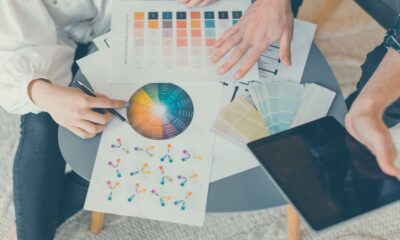
 Graphics Design11 months ago
Graphics Design11 months ago7.Exploring the Importance of Color Theory Charts
-
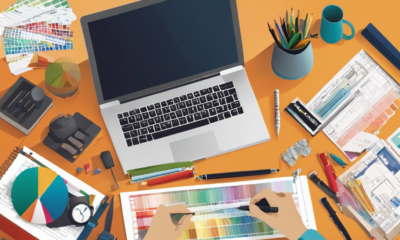
 Graphics Design10 months ago
Graphics Design10 months ago14.Mastering the Art of Print Design: Tips and Tricks
-
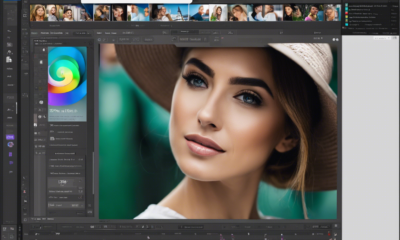
 Graphics Design10 months ago
Graphics Design10 months ago13.Exploring the Latest Trends in Photo Editing Software
-

 Graphics Design8 months ago
Graphics Design8 months ago29.Retro Design Is Making a Comeback in Modern Spaces
-
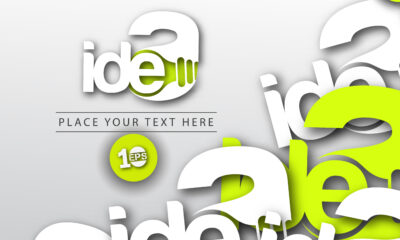
 Graphics Design12 months ago
Graphics Design12 months ago1.The Transforming Power of Typography on Graphic Design
-
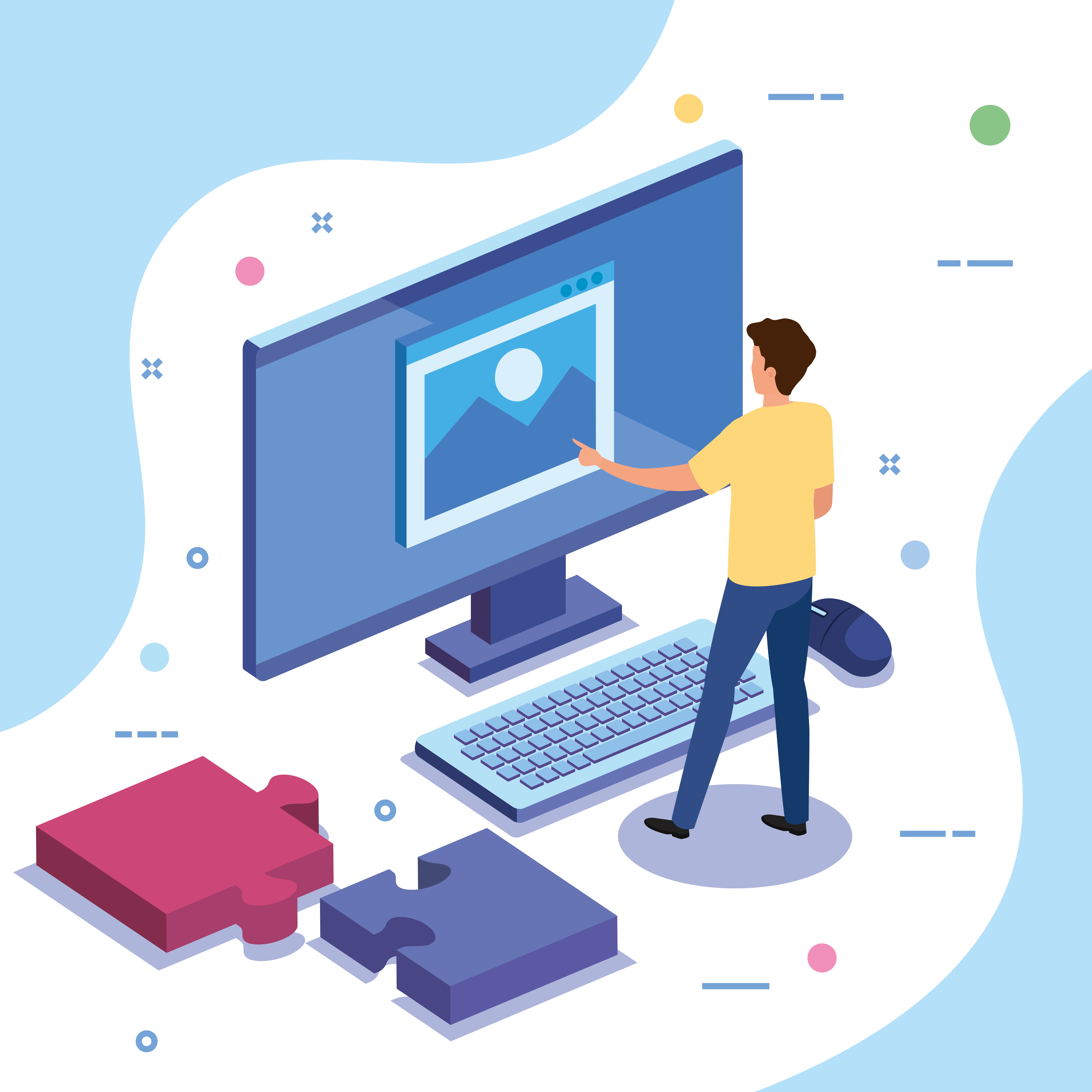
 Graphics Design11 months ago
Graphics Design11 months ago8.The Evolution of Vector Graphics Software
-

 Graphics Design9 months ago
Graphics Design9 months ago20.The Evolution of Responsive Design: Past, Present, and Future
-
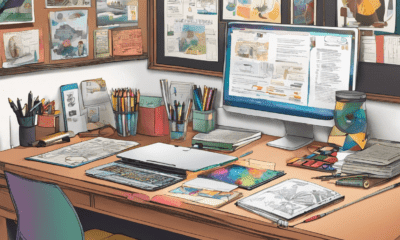
 Graphics Design9 months ago
Graphics Design9 months ago25.Mastering Different Illustration Styles






Muhammad hussain
May 8, 2024 at 8:59 am
Nice Article
binance referral code
December 2, 2024 at 3:00 pm
Thank you for your sharing. I am worried that I lack creative ideas. It is your article that makes me full of hope. Thank you. But, I have a question, can you help me?